By Sean Fagan
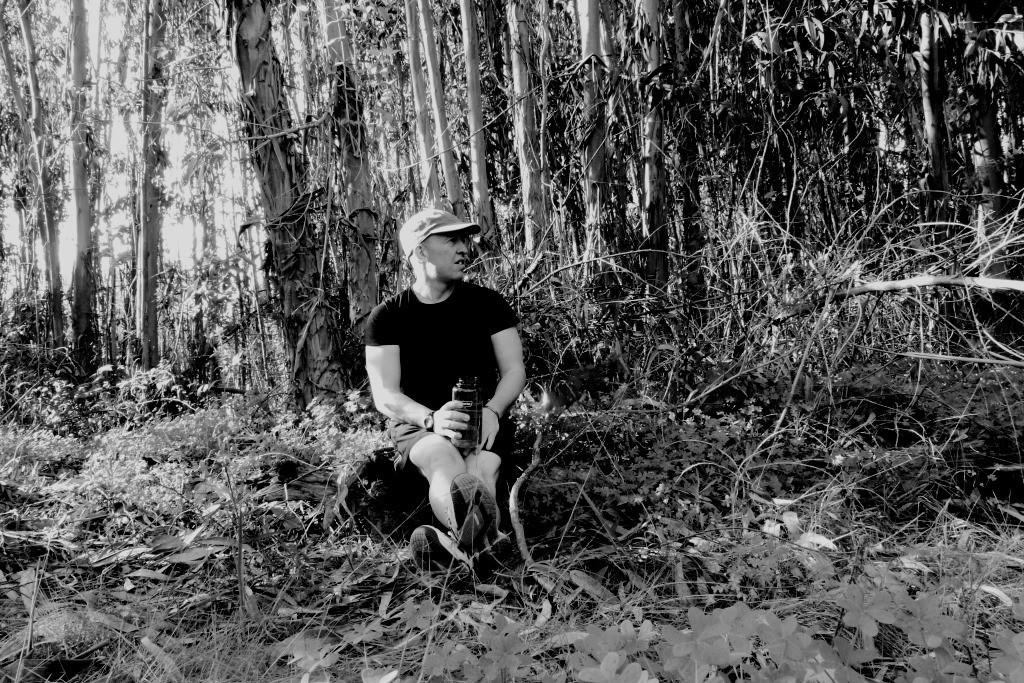
Taking a hydration break in the shade of the beautiful woods of Rio De Formosa Naturale Park, Portugal (Photo: Sean Fagan).
.
.
Exploring Different Types of Woodlands
Good for the Soul…and for Bushcraft
From a young age I’ve had a long and shameless love affair with trees.
Whatever it is about trees and woodlands, they are for myself, an endless source of fascination and serenity.
I simply like to be among their reassuring presence.
.
Earlier this year, I had the good opportunity to take a short break in a Portuguese woodland.
I had a great time.
To explore, examine and simply follow my idle curiosity - in a different type of woodland, in a different country…was deeply enjoyable.
.
As the days slowly passed these Portuguese woods revealed an enchanting and dynamic blend of the exotic with the more familiar.
Familiar flora and fauna from my home country of Ireland were present on my woodland rambles in Portugal...such as wood sorrel, willow, saffron milkcap and the Eurasian jay.
Then there was the more unfamiliar – those species that are absent from Ireland (or very rare) - the exotics for want of a better word - such as the stunning, azure-winged magpie and the ever-flamboyant hoopoe.
There were also some very unusual plants, such as the very peculiar prickly pear cactus.
.
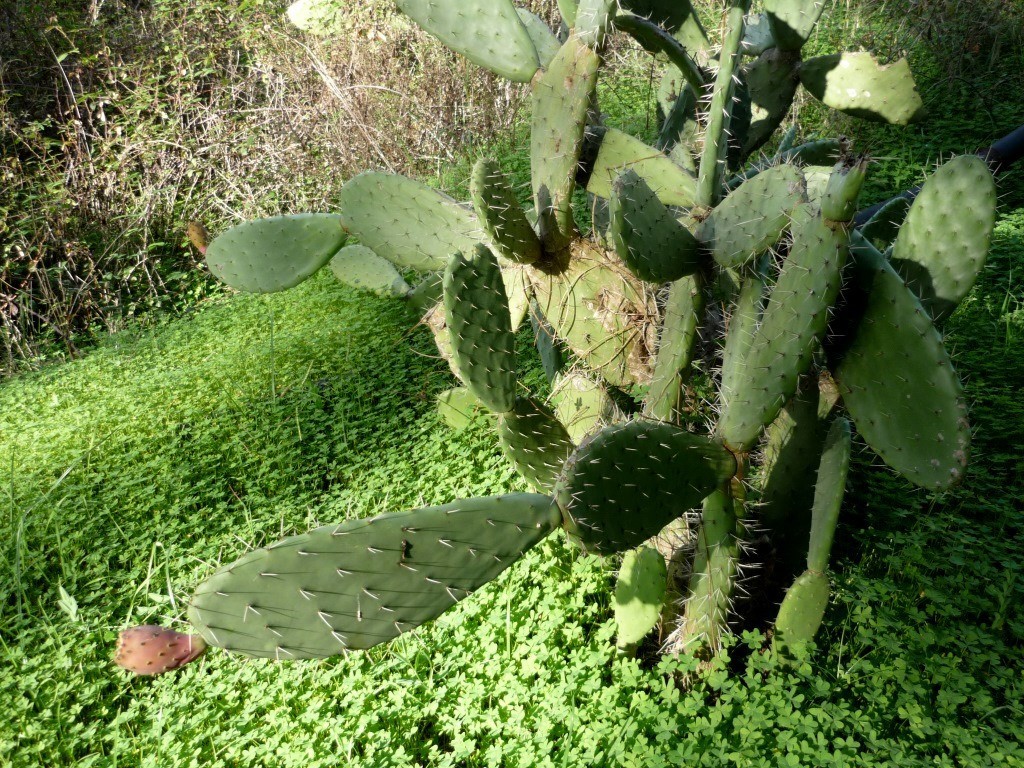
Although a non-native plant to Portugal - the prickly pear is a striking example of a cactus-type plant adapted to living in arid regions (Photo: Sean Fagan, Portugal).
.
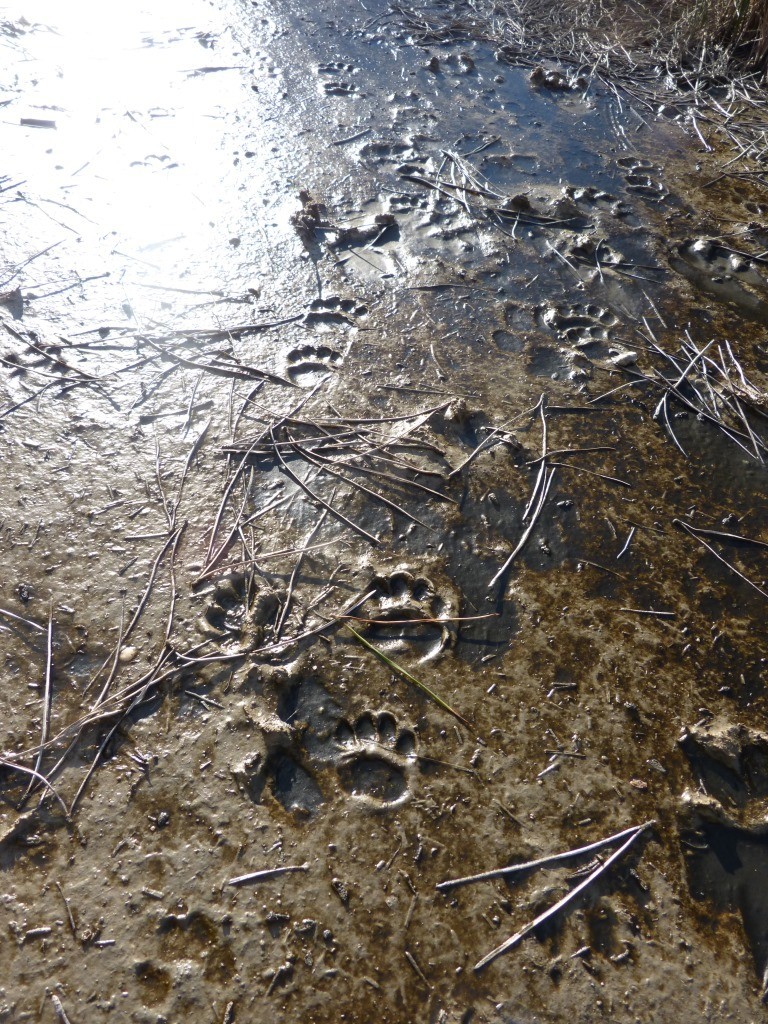
The tracks of this Eurasian Badger (Meles meles) in Portugal are identical to the badger tracks I find in my home country of Ireland (Photo: Sean Fagan, south Portugal).
.
.
If you too take great pleasure in being among trees and woods - then a journey to another, different type of woodland can be a great tonic for the admirer of woods.
It can expand your understanding and appreciation of these fascinating ecosystems - loosely labelled under the broad, umbrella term of woodlands.
It can also improve an individual’s bushcraft…
.
How Visiting Different Woods Will Improve your Bushcraft?
.
There are some obvious, practical reasons why visiting different woodlands can be beneficial for the wandering bushcrafter and outdoor enthusiast...
In the woods of Portugal, some of the most pressing issues I faced were high temperatures, fire hazards (the woods are very dry and flammable) and biting insects (mosquitoes were abundant).
In the temperate woods of Ireland – dampness and changeable weather are more pressing concerns. For example, hypothermia is more of a risk.
When I explored the northern woods of Ontario, Canada, during summertime – high temperatures, fire hazards, biting insects and the challenge of navigating through the mostly featureless, dense coniferous woods were important issues.
Shelter for example, was far less of a priority during the dry, hot summers of Ontario and Portugal than in the changeable, cooler summers of Ireland (rain is always a looming threat in Ireland, as one Irish comedian quipped about Ireland..."Sure Ireland would be a great country if you could put a roof over it".
.
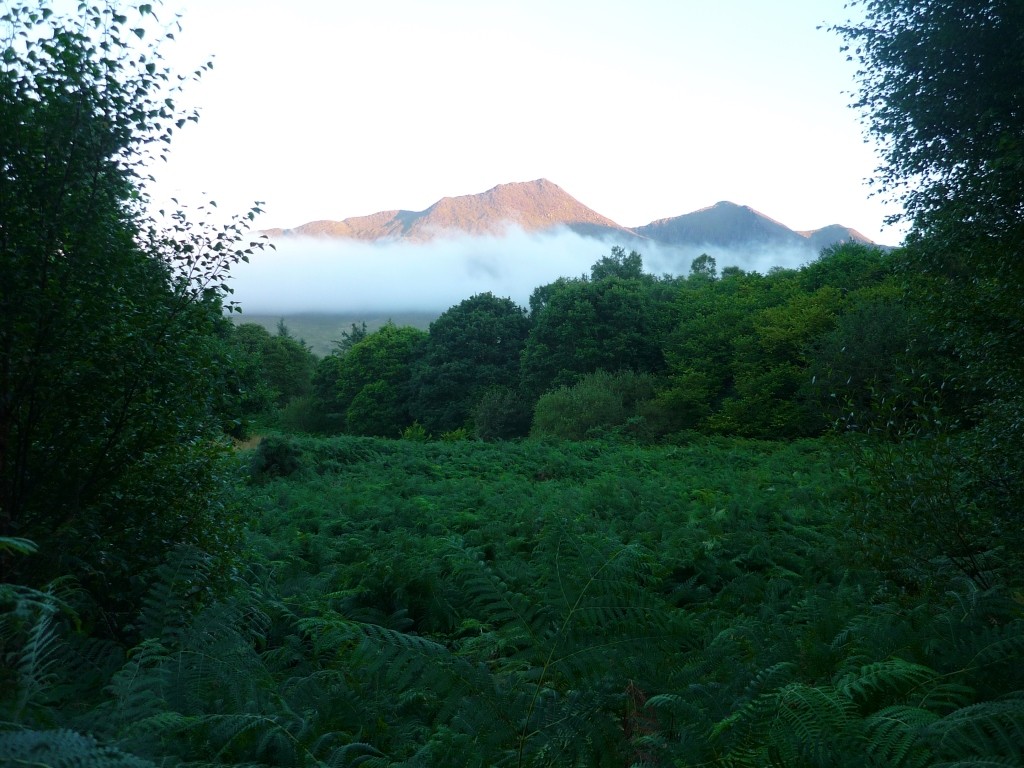
It's my general opinion that woodlands are great for the human spirit (Photo: Sean Fagan, Southwest Ireland - Cruch Mor mountain in background).
.
As you can see, by visiting different woods there is a natural expansion and prioritising of bushcraft skills.
This is a great, invaluable aspect of bushcraft – the shifting prioritisation of bushcraft skills that is specific to different environments.
.Of all the different skills that a bushcrafter can garner from camping in different woods, one of the most valuable is the ability to correctly identify resources...
.
Improving your Ability to Identify Resources
.
A large part of bushcraft is about availing of local resources.
And the first port of call is to accurately identify resources.
For example, trees, plants and mushrooms are basic woodland resources - so being able to confidently identify these resources is important if you want to use them for food or rustic medicine (or for more practical reasons such as shelter-making).
When visiting woodlands in different regions of the world, there is a good chance that an individual will come across trees, plants and fungi that can be found in the woods of their own country.
This is mostly because of two reasons: some species have a large geographic range or have closely related ‘cousins’ that may strike a chord of familiarity.
In effect, travelling aboard can allow one to be more familiar with the universal features of flora and fauna, especially among those that are related.
It also allows one to become more familiar with the habitat preference and distribution, along with the geographic variants, of various species.
.
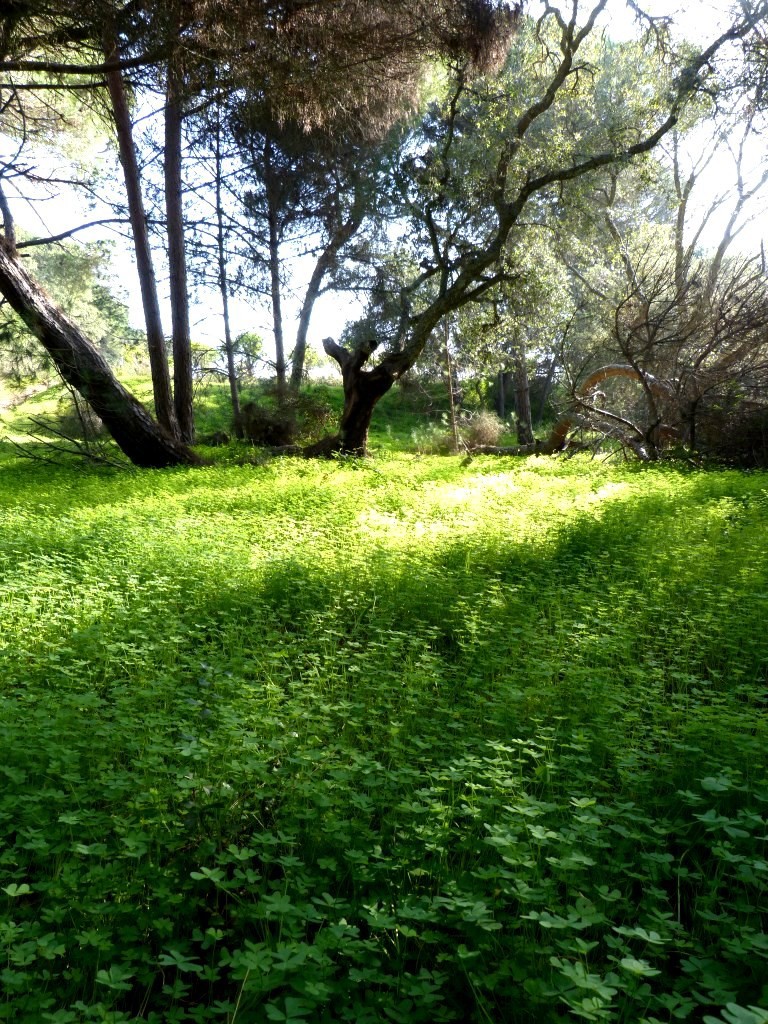
In Portugal, many woodland floors are carpeted with the invasive Bermuda Sorrel (Oxalis pes-caprae) - as in photo. This tri-foliate (three-leaved) plant is not found in Ireland but a closely related species is found in Ireland - the wood sorrel (Oxalis acetosella). A good example of two similar-looking, woodland plant species that are closely related but with different geographic ranges. Incidentally, both plant species are edible but should only be eaten in moderation (Photo: Sean Fagan, Portugal).
.
There can be something reassuring when traveling through a foreign country and noticing a familiar species.
Not only do I have a potential resource at the end of my fingertips but I also have a connection with the more familiar lands of my home country – which can be surprisingly heartening.
Here is a sample of some of the plant, bird, mammal, mushroom and tree species I found in the woodlands of the south Portugal which are also present in broad-leaf woodlands of Ireland…(I’ve included some tracks):
.
Birds: Starling (Sturnus vulgaris) and mistle thrush (Turdus viscivorus)
Plants: Broom (Cytisus scoparius) and dandelion (Taraxacum vulgaria)
Mushrooms: Penny bun (Boletus edulis) and saffron milkcap (Lactarius deliciosus)
Trees: Willow (Salix spp.) and Scots pine (Pinus sylvatica)
Tracks: Eurasian badger (Meles meles) and red fox (Vulpes vulpes)
.
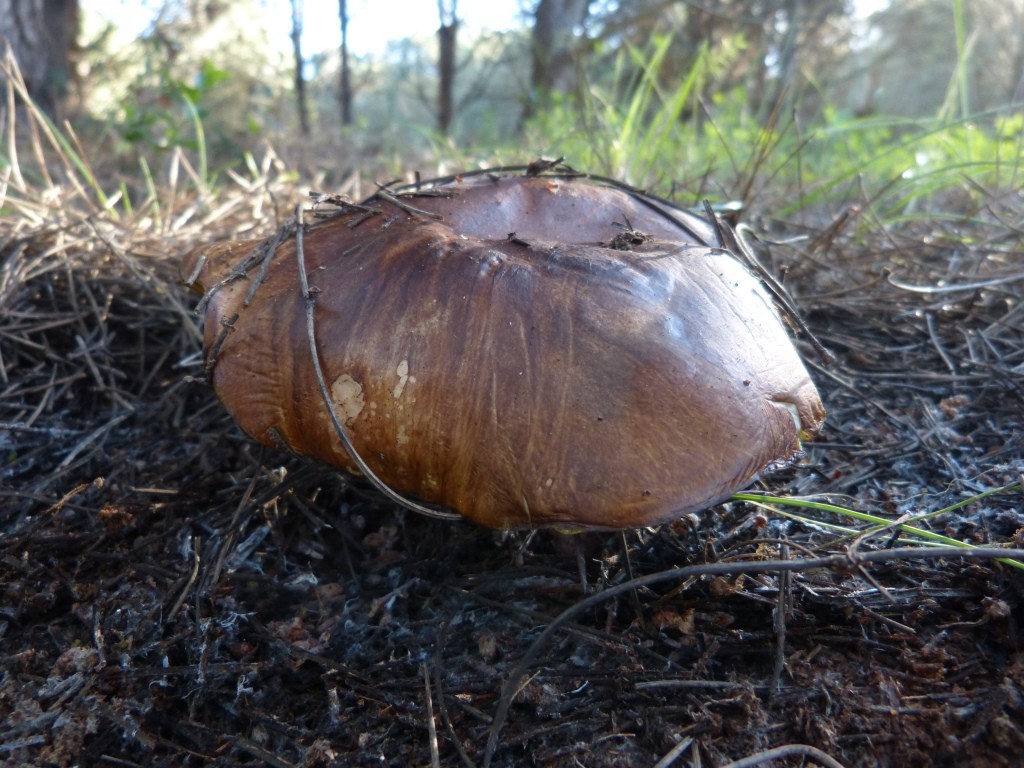
Partially obscured by fallen pine needles, I found this Penny Bun (Boletus edulis), surprisingly, among the dry soil of a woodland in Portugal. It's a mushroom species I often find in Ireland - and tastes delicious (Photo: Sean Fagan, Portugal).
.
.
Another, more obscure benefit of practising bushcraft in different woodlands is becoming more familiar with the ecology of different types of woods.
Granted, this is not the most essential aspect of bushcraft but since so much of bushcraft is the study and (dare I venture) the admiration and respect of nature - it can be enlarging and enjoyable aspect of nature.
.
Gaining a basic understanding of woodland ecology is quite easy and often enjoyable.
It’s fun knowing roughly, the role that most of the plants, fungi and animals play in a woodland.
It adds to the experience of being outdoors and feeling connected to something larger than oneself – to something that is both complex and elegant (I’ll be writing more about woodland ecology in the future and breaking it down to its component parts).
For now, I hope you'll enjoy experiencing the differences and similarities of woodlands both aboard and home even more.
.
Connecting with Woodlands
.
As a general rule woodlands are peaceful but they do seem to have a different “feel” to them (including the woods that possess hordes of biting insects!).
I’m not just attempting to describe the compelling biology and ecology of woodlands – even though in this regard woodlands are fascinating and intricate (I like to think of woodlands as a giant stage - where an immensely broad and diverse cast are very much dependent on each other for their existence).
.
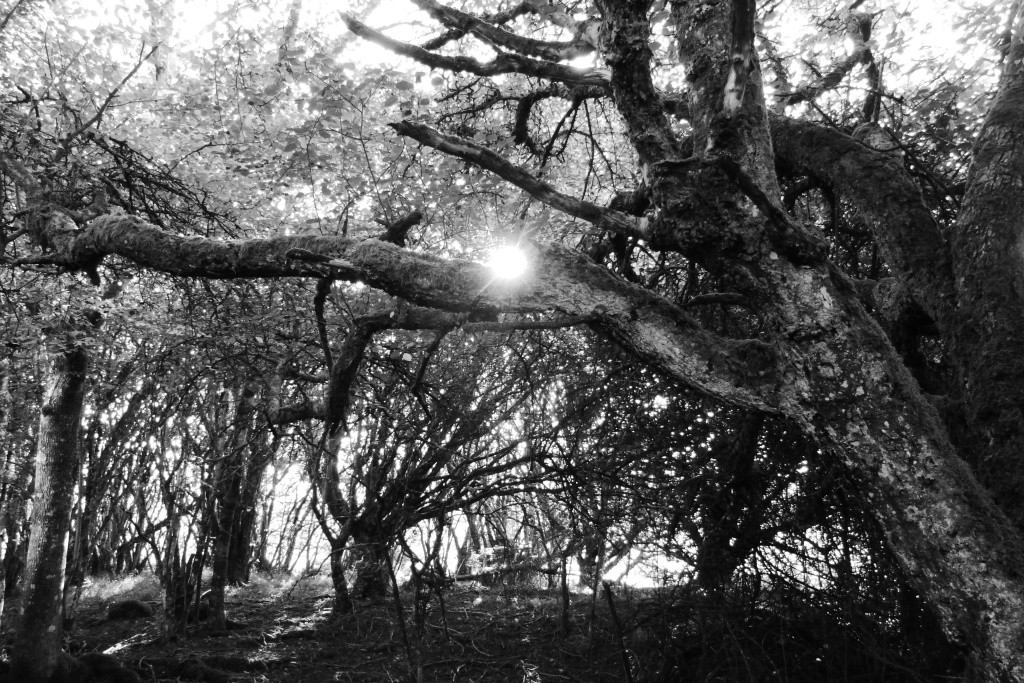
Sun peeping through the boughs of an old crab apple tree...(Photo: Sean Fagan, west Ireland).
.
What I’m touching upon are those inchoate, intuitive feelings that many people feel about trees and woods.
I don’t know how to describe the unique qualities of different woodlands for other people. I fear I will bumble too far into the land of the vague.
Maybe the nub of all this sylvan fascination originates from some residual, prehistoric instincts that lie dormant within us, which are mostly dulled from the general fractiousness of modern life – only to become activated whenever we surrender to the quietness of woods.
For myself, some woods stir a sense of excitement and anticipation the moment I enter their deep shade..
It’s a feeling I urge all outdoor enthusiasts, especially bushcrafters - to actively seek, immerse themselves in, and savour.
.
You'll be all the more richer for it.
I know I am.
.
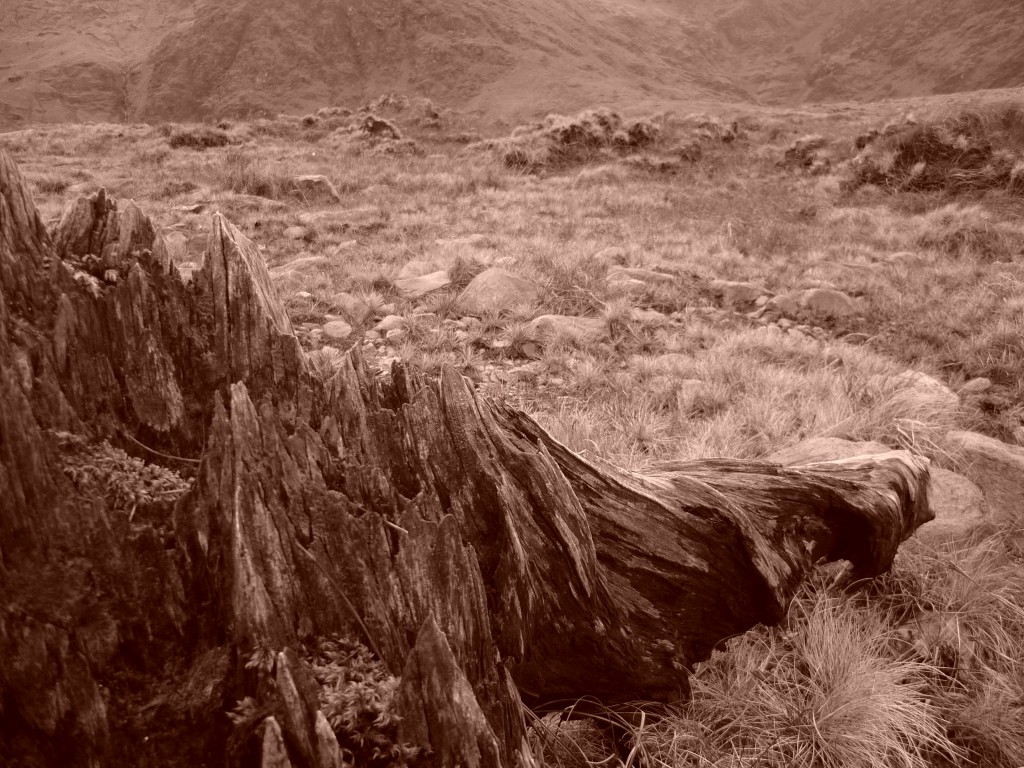
An old tree stump in the desolate Hag's Glen, southwest Ireland. A reminder of a more richly-wooded landscape from the past. Maybe someday the trees will be allowed to return (Photo: Sean Fagan).
.
.
Related articles on this website:
.
*Check us out on Instagram, Twitter & Facebook for more outdoor-related topics..
Resources:- Different woodland types of Britain (excellent intro to the woodlands of Britain (Links to woodland types are at bottom of webpage).
.
Finally, Have fun on your rambles....

On the edge of a large woodland, a dumped armchair. After a hot day of hiking it was nice to languish a while in this comfy chair. Here, I could sit like a king on his mighty throne - surveying all before him (I actually did some bird-watching from this chair). Note the fantastic sprawl of an agave plant in background - a non-native plant to Portugal (Photo: Sean Fagan).

Recent Comments